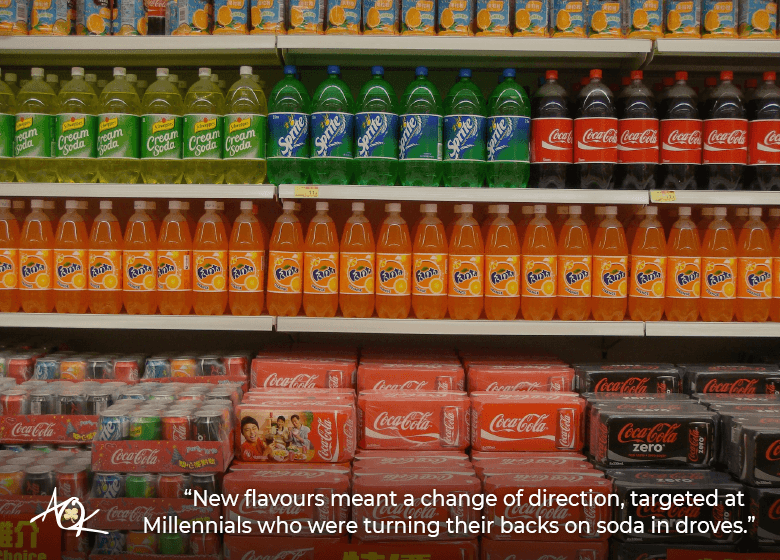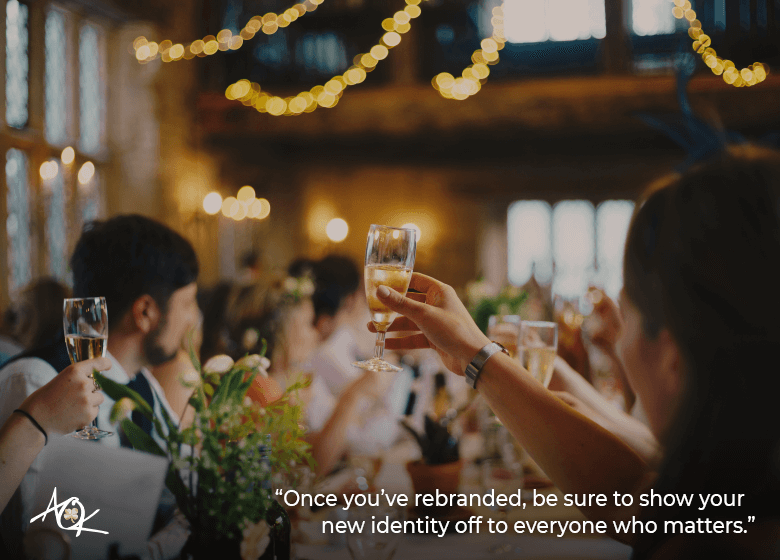Everybody loves a shiny new logo.
At some point in your organization’s future, there’s a very good chance that you’ll look to refresh your brand with a new look and feel, a renewed identity that helps you keep pace with competitors and stay relevant amongst your target clientele.

You might even opt for the full Monty and decide on a complete name change, as well.
Maybe it’s because you’re simply tired of your old look—a small to medium-sized midlife crisis, if you will. Or maybe a rebrand provides an opportunity to reposition your organization to reflect its operational evolution. Who knows? From your company’s inception to its present state, you may not even deliver the same products or services, making your old brand identity or name obsolete.
Coca Cola obviously decided that it was time for a change when it decided to launch a radical reimagining of its Diet Coke brand. In place of the standardized cans were new streamlined cylinders with a single, minimalistic ribbon signifying one of five flavours (four fruitful new tastes and the original, of course). The message: we may be selling you an old drink, but we’re quite sure you’ll want to give these new versions a try (or keep drinking the original sugar-free version) thanks to our innovative new look.
Coke’s bitter rival Pepsi also put a new spin on one of its popular brands in recent years, renaming Pepsi Max as Pepsi Zero Sugar. Apparently, the diet nature of the drink wasn’t obvious to consumers, hence the nomenclatural departure.
I draw on these two examples from industry heavyweights because they offer insight into the interconnectedness of brand and business. The pop industry has gone more than a little flat in recent years (pun intended). Consumer tastes are changing, shifting to healthier options. Some jurisdictions are imposing sugar and soft drink taxes to combat obesity.

According to the New York-based Beverage Marketing Corporation, an industry consulting and advocacy group, sales of carbonated soft drinks have declined for 13 straight years. The once airtight soda industry continues to lose its fizzle. What to do?
This multi-billion-dollar business is too big to fail—particularly in the view of concerned shareholders. So, bring in the marketing gurus to give tired products a new look. In doing so, these multinational behemoths offer some valuable lessons to us corporate mortals.
First, they rebranded for a reason. This is a time-consuming, expensive process—boutique marketing agencies will usually charge at least $20,000 for a fairly basic rebranding project, although often more; the same fees would run much higher for a major corporation—and so not one that should be partaken without justification. In this case, sales were down, again. That’s a good reason to invest the time and capital to produce a new look.
Next, they did their homework. They re-explored and defined their target clientele, conducted market research—and I’m guessing endless focus groups—to determine what those consumers wanted to drink, and then set out to make a more appealing product. The same basic rule applies to any organization of any size.
In the case of Coca-Cola, the pop maker clearly looked at what Diet Coke meant to the organization and took the time to determine what a rebrand would mean for their bottom line.
In this case, the name could stay, but the tone needed to be different (unlike Pepsi, which opted for a new moniker for Pepsi Max). New flavours meant a major change of direction, likely targeted at younger, more fickle Millennials who were turning their backs on soda in droves.

Diet Coke’s new identity was intended to convey a sense of freshness, vitality and great taste. Will it work? Who knows? But no one can argue that Coke wasn’t swinging for the marketing fences with this rebrand.
It seems as though they also asked one of the most important questions that any organization can pose when going down this path: what’s in it for our customers? In this case, new flavours were clearly the temptation that executives hoped would lure pop-drinkers to their brand.
Now, your rebranding exercise might be about creating a new look and feel, and not much else. But that’s not good enough. You should also be selling a reinvigorated approach to customer service, or product improvements, depending on whether your organizations sells goods, services, or both.
There’s always an opportunity to remind your clients that you care about them and that you’re willing to go the extra mile to put a smile on their faces—even if it’s with an initiative as simple as producing a quarterly newsletter to keep them up to date on company or industry developments. Simple gestures and value-added offerings show you’re committed to their success as much as your own.
Last point: once you’ve rebranded, be sure to show your new identity off to everyone who matters. Have a party at your workplace and invite key clients to celebrate the company’s updated look and feel. Blast out the good news in that newsletter or on your blog or mobile app. Sing your own praises on social media.

Rebranding is inherently risky, but also very fruitful when done right. Coke and Pepsi both have their fingers crossed that the last part of that sentence is true.
About The Author
Marketing Team
The AOK Marketing Team is a diverse group of amazing individuals driven to help all of our clients succeed. Great people are everywhere, and we believe that people should control their workday, their work environment, and where they live. We have team members in 9 countries: United States, Canada, Egypt, Belgium, Ireland, Australia, India, Pakistan, and Hong Kong.
How can we help you?






